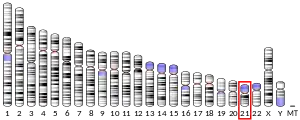| N6AMT1 | |||||||||||||||||||||||||||||||||||||||||||||||||||
|---|---|---|---|---|---|---|---|---|---|---|---|---|---|---|---|---|---|---|---|---|---|---|---|---|---|---|---|---|---|---|---|---|---|---|---|---|---|---|---|---|---|---|---|---|---|---|---|---|---|---|---|
| Identifiers | |||||||||||||||||||||||||||||||||||||||||||||||||||
| Aliases | N6AMT1, C21orf127, HEMK2, MTQ2, N6AMT, m.HsaHemK2P, PRED28, N-6 adenine-specific DNA methyltransferase 1 (putative), N-6 adenine-specific DNA methyltransferase 1, PrmC, KMT9 | ||||||||||||||||||||||||||||||||||||||||||||||||||
| External IDs | OMIM: 614553 MGI: 1915018 HomoloGene: 5637 GeneCards: N6AMT1 | ||||||||||||||||||||||||||||||||||||||||||||||||||
| |||||||||||||||||||||||||||||||||||||||||||||||||||
| |||||||||||||||||||||||||||||||||||||||||||||||||||
| |||||||||||||||||||||||||||||||||||||||||||||||||||
| |||||||||||||||||||||||||||||||||||||||||||||||||||
| |||||||||||||||||||||||||||||||||||||||||||||||||||
| Wikidata | |||||||||||||||||||||||||||||||||||||||||||||||||||
| |||||||||||||||||||||||||||||||||||||||||||||||||||
N-6 adenine-specific DNA methyltransferase 1 is a protein that in humans is encoded by the N6AMT1 gene. [5]
Function
The N6AMT1 gene encodes an N(6)-adenine-specific DNA methyltransferase. The encoded enzyme may be involved in the methylation of release factor I during translation termination. This enzyme is also involved in converting the arsenic metabolite monomethylarsonous acid to the less toxic dimethylarsonic acid. Alternative splicing of this gene results in multiple transcript variants. A related pseudogene has been identified on chromosome 11. [provided by RefSeq, Jul 2014]. N6AMT1 functions as a protein glutamine methyltransferase and is essential for mouse development (Liu et al., Mol. Cell. Biol. 2010).
References
- 1 2 3 GRCh38: Ensembl release 89: ENSG00000156239 - Ensembl, May 2017
- 1 2 3 GRCm38: Ensembl release 89: ENSMUSG00000044442 - Ensembl, May 2017
- ↑ "Human PubMed Reference:". National Center for Biotechnology Information, U.S. National Library of Medicine.
- ↑ "Mouse PubMed Reference:". National Center for Biotechnology Information, U.S. National Library of Medicine.
- ↑ "Entrez Gene: N-6 adenine-specific DNA methyltransferase 1". Retrieved 2018-08-24.
Further reading
- Figaro S, Scrima N, Buckingham RH, Heurgué-Hamard V (July 2008). "HemK2 protein, encoded on human chromosome 21, methylates translation termination factor eRF1". FEBS Lett. 582 (16): 2352–6. doi:10.1016/j.febslet.2008.05.045. PMID 18539146. S2CID 38589664.
- Rose JE, Behm FM, Drgon T, Johnson C, Uhl GR (2010). "Personalized smoking cessation: interactions between nicotine dose, dependence and quit-success genotype score". Mol. Med. 16 (7–8): 247–53. doi:10.2119/molmed.2009.00159. PMC 2896464. PMID 20379614.
- Ren X, Aleshin M, Jo WJ, Dills R, Kalman DA, Vulpe CD, Smith MT, Zhang L (June 2011). "Involvement of N-6 adenine-specific DNA methyltransferase 1 (N6AMT1) in arsenic biomethylation and its role in arsenic-induced toxicity". Environ. Health Perspect. 119 (6): 771–7. doi:10.1289/ehp.1002733. PMC 3114810. PMID 21193388.
- Harari F, Engström K, Concha G, Colque G, Vahter M, Broberg K (July 2013). "N-6-adenine-specific DNA methyltransferase 1 (N6AMT1) polymorphisms and arsenic methylation in Andean women". Environ. Health Perspect. 121 (7): 797–803. doi:10.1289/ehp.1206003. PMC 3702000. PMID 23665909.
- Chen X, Guo X, He P, Nie J, Yan X, Zhu J, Zhang L, Mao G, Wu H, Liu Z, Aga D, Xu P, Smith M, Ren X (January 2017). "Interactive Influence of N6AMT1 and As3MT Genetic Variations on Arsenic Metabolism in the Population of Inner Mongolia, China". Toxicol. Sci. 155 (1): 124–134. doi:10.1093/toxsci/kfw181. PMC 5216648. PMID 27637898.
Peng Liu,Song Nie, Bing Li,Zhong-Qiang Yang, Zhi-Mei Xu, Jian Fei, Chyuansheng Lin,
Rong Zeng, and Guo-Liang Xu. Deficiency in a Glutamine-Specific Methyltransferase for Release
Factor Causes Mouse Embryonic Lethality. MOLECULAR AND CELLULAR BIOLOGY, Sept. 2010, p. 4245–4253 Vol. 30, No. 17
0270-7306/10/
This article incorporates text from the United States National Library of Medicine, which is in the public domain.



